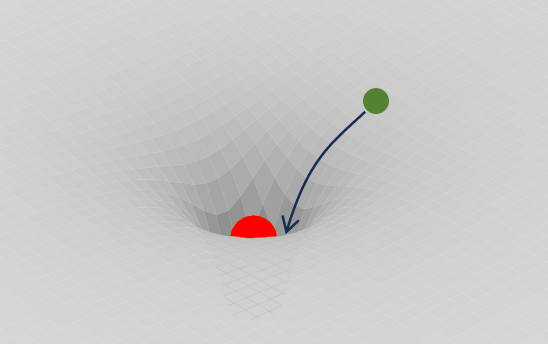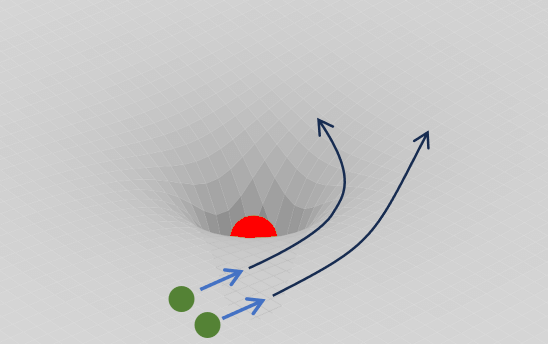* After setting the small object’s mass, position, initial velocity, and initial direction of movement, turn on the ‘Run’ checkbox to start the simulation.
* The gravitational constant of the celestial body were assumed to be ‘1’.
General relativity
General relativity is a theory explaining gravity proposed by Einstein.
Unusually, this theory uses geometry to explain gravity.
Before general relativity, gravity was described as a force acting in a straight line between two objects.

However, general relativity answers this force in a very different way. In general relativity, gravity is a property of space spread out in the universe. Objects with mass distort the space around them. The greater the mass, the greater the distortion of space. This distortion of space becomes what is called a ‘gravitational field’ in classical mechanics.
Let’s assume that we place a small object still in the space affected by this gravitational field. A small object accelerates toward a large object following the distortion of space. This is a free-fall motion, similar to what we commonly see when we drop an object.

Let’s assume that some small object (celestial body) passes by. This object exhibits curved motion under the influence of distorted space. This explains the phenomenon of a small celestial body orbiting a massive celestial body.

What’s interesting is that gravity bends not only space but also time. Time and space are connected as one. So Einstein used the name time-space to call it together. In places where space-time is curved, a strange phenomenon occurs where time passes more slowly.
Here’s an interesting video explaining gravity with spandex fabric. It’s a monumental video with over 100 million views.